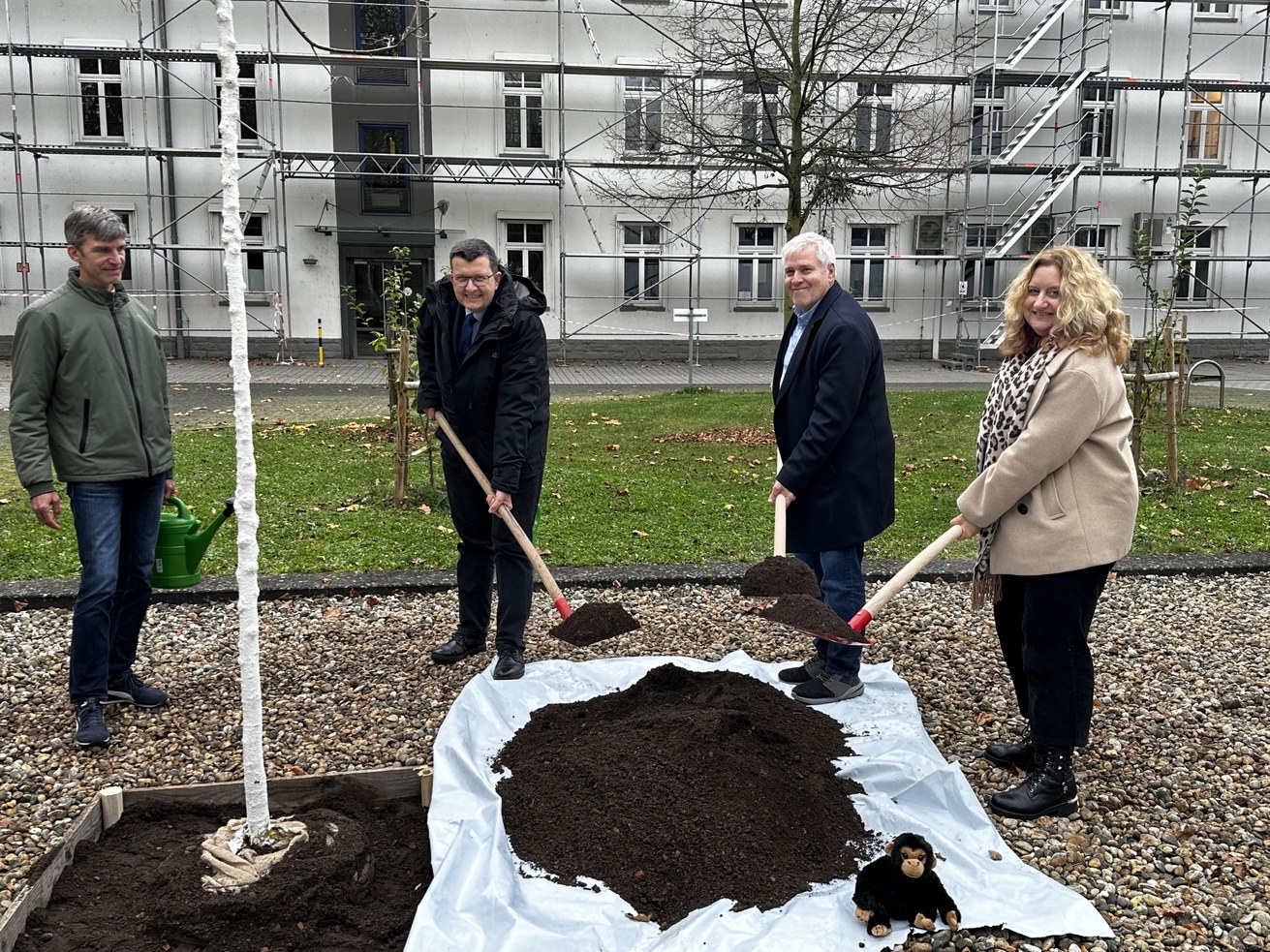UNIVERSITY OF KOBLENZ
Universitätsstraße 1
56070 Koblenz

With this symbolic act, the University of Koblenz responded to a call from the Jane Goodall Institute Germany and set an example for sustainability and the protection of biodiversity.
Prof. Dr Claudia Quaiser-Pohl, Vice President for Research and Transfer at the University, who is strongly committed to promoting access for women to STEM subjects and the University's cooperation with Africa, emphasised the importance of the work and role model function of the famous natural scientist Dr Jane Goodall before the planting. In view of her activities in environmental protection, Goodall is also a particularly good fit for the University of Koblenz, as topics such as environmental protection, nature conservation and species protection are very important at the University of Koblenz, said Quaiser-Pohl.
The university is dedicated to the pressing issues of nature conservation and biodiversity in both teaching and research. Goodall's legacy therefore fits perfectly with the university's sustainability goals.
In addition, Goodall's many years of behavioural research with chimpanzees in Gombe National Park in Tanzania could be used to build a bridge to the research activities of the University of Koblenz in Africa.
Prof Dr Eberhard Fischer, manager of the university's Biology Division, reported on his many years of research projects in Africa. Together with Dr Dorothee Killmann, a scientific member of his division, he presented her with a certificate for a newly discovered balsam from Rwanda at a ceremony in Eberswalde on 31 October 2024 to mark Goodall's 90th birthday. The plant was named "Goodall's balsam - Impatiens goodalliae" in honour of the world-famous natural scientist.
University President Prof Dr Stefan Wehner, Vice President for Research and Transfer Prof Dr Claudia Quaiser-Pohl and Prof Dr Eberhard Fischer planted the service tree, which has optimal growing conditions on campus. The University of Koblenz's Sustainability Officer, Prof Dr Henning Pätzold, then watered the tree.
A wild service tree grows 10 to 20 metres high and 7 to 15 metres wide. From May to June, it is adorned with white flowers that attract various insects. From October, this tree bears brown, egg-shaped, non-poisonous fruit with a floury flavour. It belongs to the rose family (Rosaceae) and is found in warmth-loving mixed forests. The wild service tree is widespread in Europe from Great Britain to Greece, in western Asia from Turkey to Iran and in Morocco and Algeria. The life expectancy of the wild service tree is 200 to 300 years.
On the campus of the University of Koblenz, the wild service tree symbolises the connection to nature and the protection of biodiversity - values that Jane Goodall has tirelessly championed to this day. With this planting, the University of Koblenz hopes to raise awareness of sustainable practices and the preservation of the environment and inspire future generations to treat nature responsibly.
About Dr Jane Goodall
Dr Jane Goodall was born in London in 1934. She is a world-renowned primatologist and environmental activist. She became famous for her groundbreaking research on chimpanzees in Gombe National Park in Tanzania, which she began in 1960. Among other things, she discovered that chimpanzees not only use tools, but can also make them themselves - a behaviour that was previously considered uniquely human. Her research also enabled her to document complex social structures and emotional bonds in chimpanzees.
Goodall completed her doctorate at the University of Cambridge and later founded the Jane Goodall Institute, which campaigns for the protection of wild animals and sustainable development. She is also the initiator of the "Roots & Shoots" movement to promote environmental awareness among young people. She has received numerous honours for her life's work. Goodall continues to campaign for nature conservation and the preservation of biodiversity and has been travelling the world for more than 20 years to spread her message.